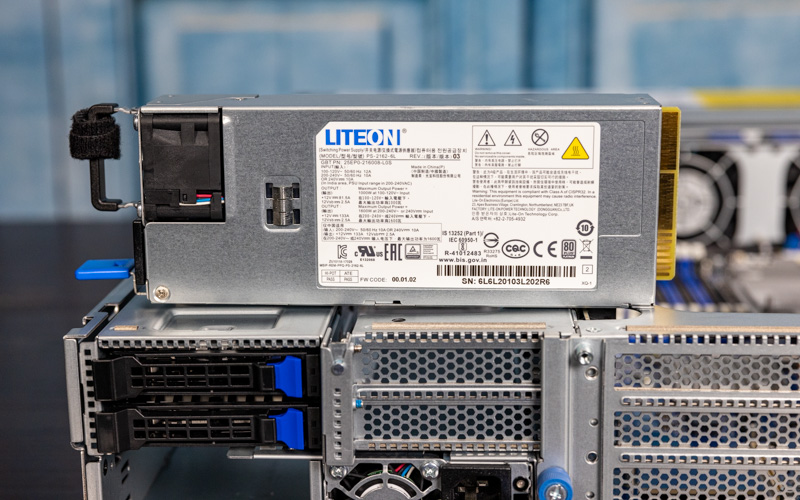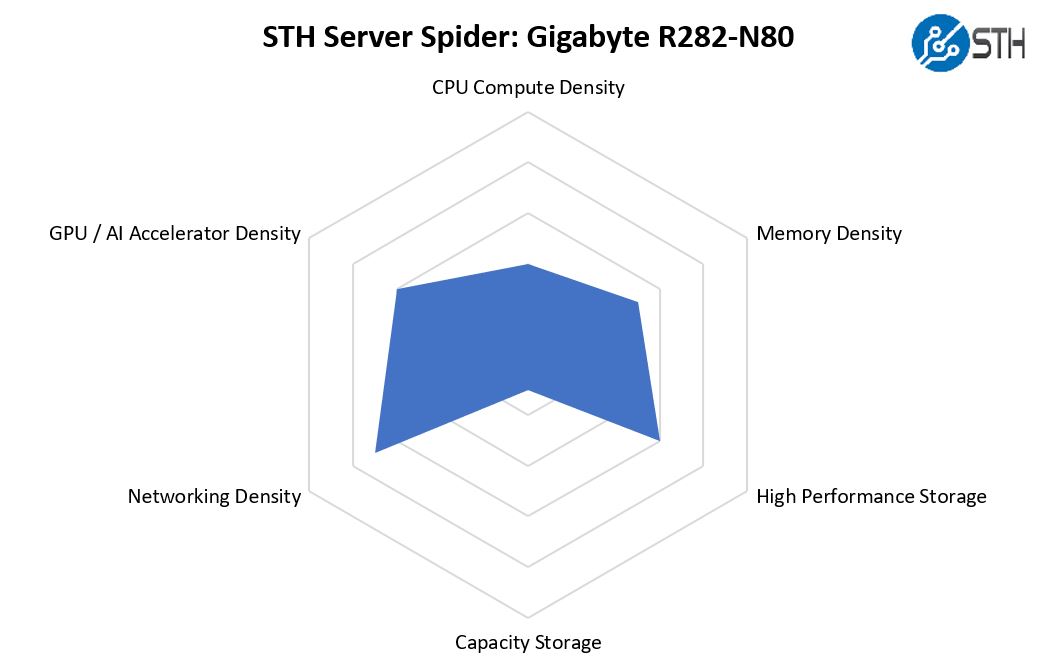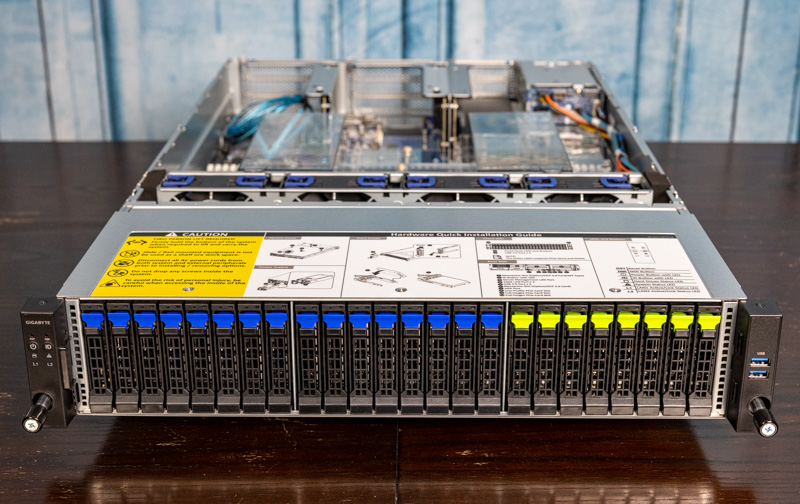Gigabyte R282-N80 Power Consumption
In terms of power consumption, we did not have the fullest of configurations with the Intel Xeon Platinum 8380’s with only 16x 32GB DDR4-3200, two Kioxia CD6 NVMe SSDs, a Broadcom SAS3008 HBA, a Broadcom OCP NIC 2.0 25GbE adapter, and a Mellanox BlueField-2 100GbE DPU.

We tested these in our data center with 70% RH on 208V power. With the Intel Xeon Platinum 8380 CPUs we saw a maximum of around 979W. Under normal “heavy” 70-90% usage the system was often in the 800-900W range. While it may seem like we saw lower power than the 1.6kW PSUs can provide, in reality, there is a lot of room to add more and higher-power components to our configuration. In a 2U chassis, filling 20 systems for 4U worth of these servers means that one would need to plan for a 20kW+ rack.
STH Server Spider: Gigabyte R282-N80
In the second half of 2018, we introduced the STH Server Spider as a quick reference to where a server system’s aptitude lies. Our goal is to start giving a quick visual depiction of the types of parameters that a server is targeted at.

This is a very flexible configuration. It is designed to allow for well-rounded expansion capability instead of optimizing on vectors such as the highest compute or memory density. Those optimizing for compute density, for example, would turn to 2U 4-node (2U4N) or similar form factors over a single node 2U server. Likewise, there are more dense 3.5″ platforms and GPU/ accelerator platforms out there. Still, as a general-purpose flexible server, this makes a lot of sense.
Final Words
Overall, the Gigabyte R282-N80 is an excellent all-around platform. For those who are focused on sticking with Intel Xeon platforms in this generation (AMD EPYC offers something different), Gigabyte is maximizing this 2U system.

Perhaps the design theme of the platform is flexibility. We have seen a number of very specific 2U form factors recently on STH focusing on GPU acceleration. There is still a need for mainstream 2U servers that balance expandability and flexibility with density. Filling a rack with these servers likely means moving to 20-30kW per rack infrastructure. At that level, some data centers will struggle so going to higher-density 1U platforms just means less flexibility.
We will suggest that our readers double-check the hardware overview and the block diagram sections as there are some necessary additions such as high-speed NICs and a SAS RAID controller/ HBA due to the onboard networking and the SAS3 expander built-in. Overall, this is a very nice package that Gigabyte has put together.




It’s interesting to see that passive risers are still possible with Gen 4. Not much of that to see in the consumer space.
I’m guessing they’ve only managed it because they’re using an exotic, low loss, perfect impedance (surface mount by the looks of it?) connector between the riser and the motherboard.